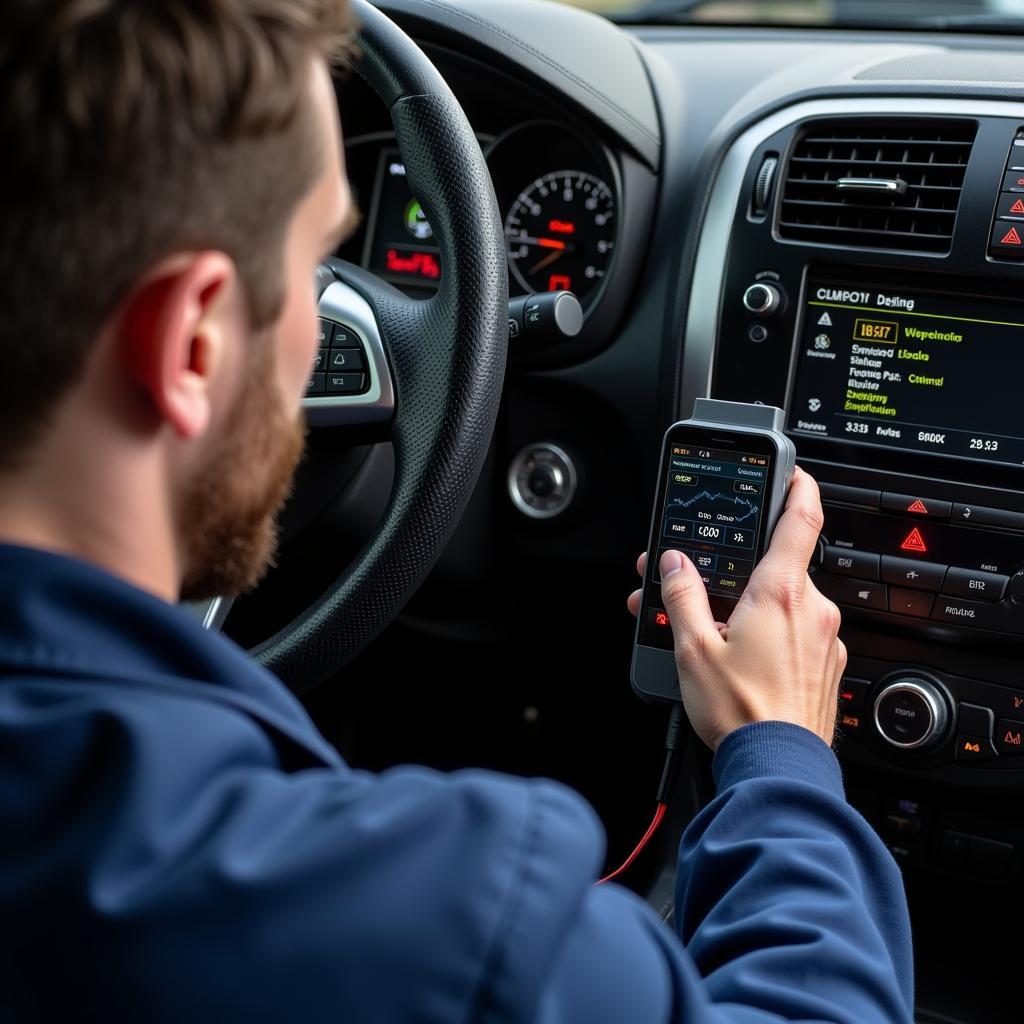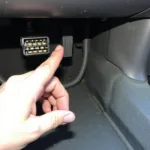The comfort of your car’s interior relies heavily on a well-functioning climate control system. While most drivers take this intricate network of components for granted, understanding how it interacts with your car’s computer system via climate control OBD2 diagnostics can be incredibly insightful. This knowledge can be particularly helpful when troubleshooting issues or seeking repairs.
Decoding Your Car’s Climate Control System
Your car’s climate control system, often referred to as the HVAC (Heating, Ventilation, and Air Conditioning) system, does more than simply adjust temperature. It’s responsible for:
- Temperature regulation: This involves both heating and cooling the cabin.
- Airflow control: Directing air to different vents (defrost, face, footwell) ensures optimal comfort.
- Air filtration: The system cleans the air entering the cabin, removing dust, pollen, and other pollutants.
- Humidity control: This is particularly important in preventing window fogging.
The Role of OBD2 in Climate Control
Your car’s onboard computer, often called the Engine Control Unit (ECU), manages a vast array of systems, and that includes the HVAC system. OBD2 (On-Board Diagnostics, generation 2) is a standardized system that allows external devices, such as OBD2 scanners, to communicate with the ECU.
When it comes to climate control, an OBD2 scanner can:
- Read fault codes: If a sensor malfunctions or a component fails within the HVAC system, the ECU will log a specific code. An OBD2 scanner can retrieve these codes, helping pinpoint the issue.
- Display live data: The scanner can show real-time information from various sensors within the climate control system, such as temperature, pressure, and actuator positions. This data is invaluable for diagnosing more complex problems.
 OBD2 Scanner for Climate Control Diagnosis
OBD2 Scanner for Climate Control Diagnosis
Common Climate Control Issues Detectable via OBD2
Many climate control issues trigger OBD2 codes. Here are some common examples:
- Faulty blend door actuator: This actuator controls the blend door, which mixes hot and cold air to achieve the desired temperature. A faulty actuator can result in incorrect temperature output.
- Malfunctioning A/C compressor: The compressor is the heart of the A/C system. If it fails, the system won’t be able to cool the air.
- Low refrigerant levels: A leak in the A/C system can lead to low refrigerant, reducing cooling efficiency.
- Problematic blower motor resistor: This resistor regulates the fan speed. A faulty one can limit fan speeds or cause complete blower motor failure.
Beyond Diagnostics: OBD2 and Climate Control Customization
While primarily used for diagnostics, OBD2 technology also offers a degree of customization for your climate control system. With the right software and a compatible OBD2 adapter, some vehicles allow adjustments to:
- Automatic climate control settings: Fine-tune temperature thresholds and fan speeds for specific situations.
- Remote start pre-conditioning: Start your car remotely and activate the climate control to heat or cool the cabin before you get in.
Expert Insight: “The ability to access and analyze climate control data through OBD2 has revolutionized automotive diagnostics. It empowers mechanics and even car owners to pinpoint and understand HVAC issues with greater precision,” says John Miller, Senior Automotive Engineer at OBDFree.
Choosing the Right OBD2 Scanner for Climate Control
Not all OBD2 scanners are created equal. When selecting a scanner for climate control diagnostics, consider the following:
- Compatibility: Ensure the scanner supports your car’s make, model, and year.
- Functionality: Look for a scanner that can read and clear HVAC-related fault codes and display live data from relevant sensors.
- User-friendliness: Opt for a scanner with an intuitive interface and clear instructions.
Conclusion
Understanding how climate control OBD2 diagnostics work can be invaluable for car owners. From simple troubleshooting to potential customization, the ability to communicate with your car’s HVAC system via OBD2 empowers you with knowledge and control over your driving comfort. Remember to consult your vehicle’s manual or a trusted mechanic for guidance before attempting any DIY repairs.
FAQs
1. Can I use any OBD2 scanner for climate control diagnostics?
Not necessarily. Ensure the scanner you choose is compatible with your car’s make, model, and year and supports climate control system diagnostics.
2. What should I do if my OBD2 scanner detects a climate control fault code?
While some codes might indicate minor issues, it’s best to consult a qualified mechanic for proper diagnosis and repair.
3. Can I recharge my car’s A/C system myself?
While DIY A/C recharge kits are available, it’s generally recommended to have this done by a professional to ensure proper handling of refrigerant and system pressure.
4. How often should I have my car’s climate control system serviced?
It’s a good idea to have your system inspected annually or as recommended in your car’s maintenance schedule.
5. Can I customize my climate control system with remote start via obd2 code?
The extent of customization possible via OBD2 varies depending on your car’s make and model. Consult your owner’s manual or a specialized mechanic for information on your specific vehicle.
If you have any questions about your car’s climate control system, OBD2 diagnostics, or need further assistance, feel free to contact our team of experts via WhatsApp: +1(641)206-8880, or Email: [email protected]. We offer 24/7 support and are always happy to help!

